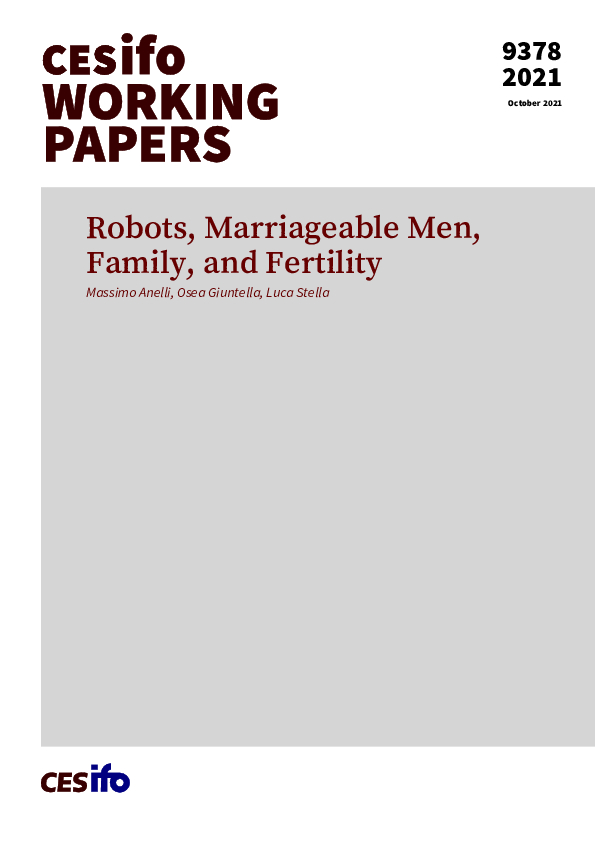Robots, Marriageable Men, Family, and Fertility
CESifo, Munich, 2021
CESifo Working Paper No. 9378

Robots have radically changed the demand for skills and the role of workers in production. This phenomenon has replaced routine and mostly physical work of blue collar workers, but it has also created positive employment spillovers in other occupations and sectors that require more social interaction and managing skills. This study examines how the exposure to robots and its heterogeneous effects on the labor market opportunities of men and women affected demographic behavior. We focus on the United States and find that in regions that were more exposed to robots, gender gaps in income and labor force participation declined, reducing the relative economic stature of men. Regions affected by intense robot penetration experienced also an increase in both divorce and cohabitation and a decline –albeit non-significant– in the number of marriages. While there was no change in the overall fertility rate, marital fertility declined, and there was an increase in nonmarital births. Our findings provide support to the hypothesis that changes in labor market structures that affect the absolute and relative prospects of men may reduce their marriage-market value and affect marital and fertility behavior.